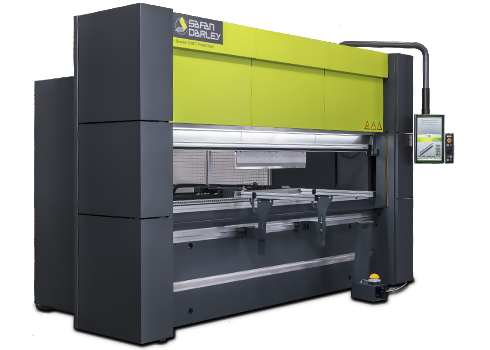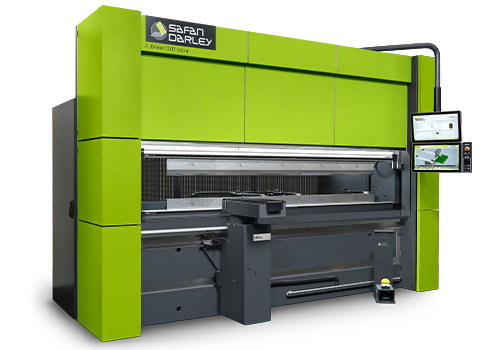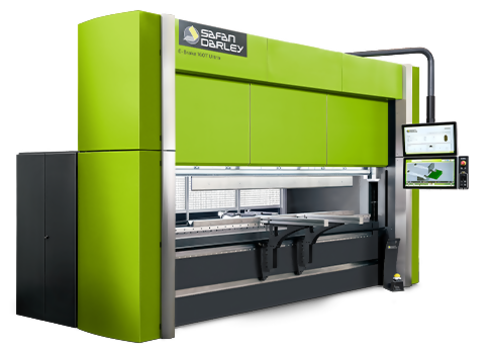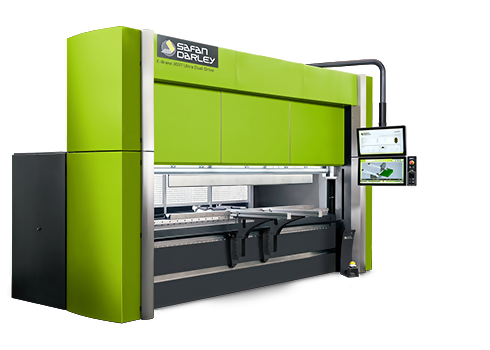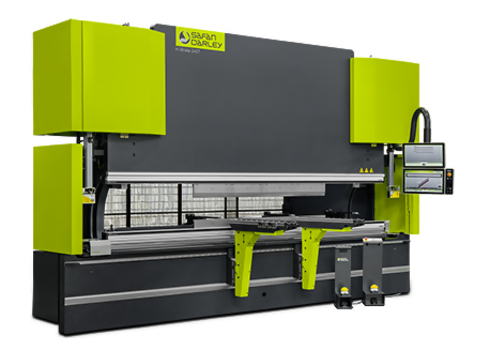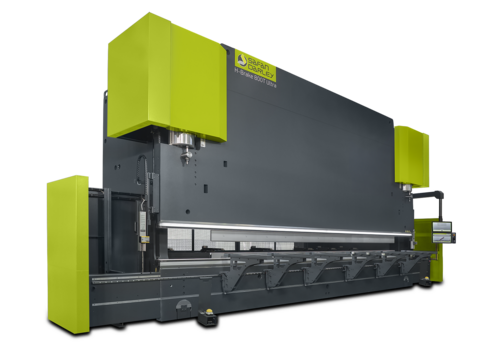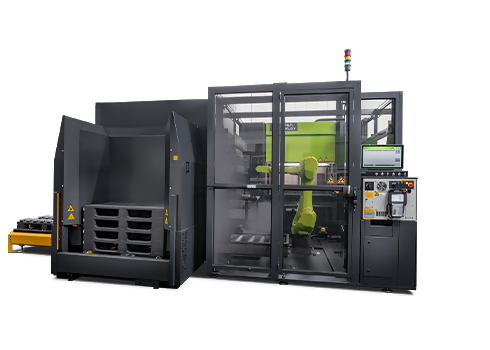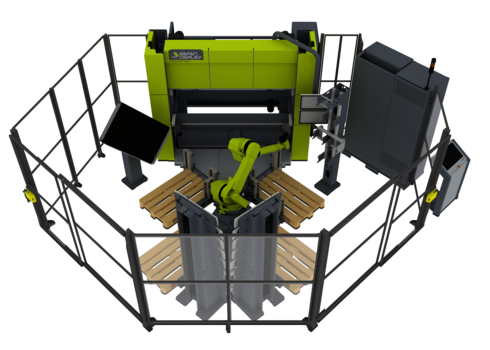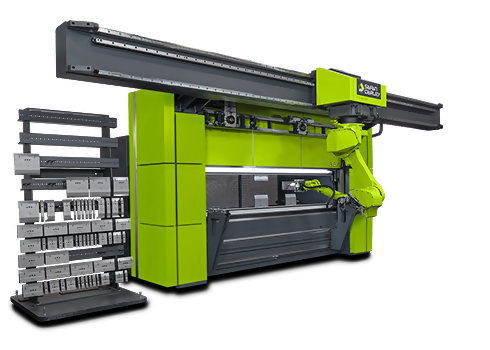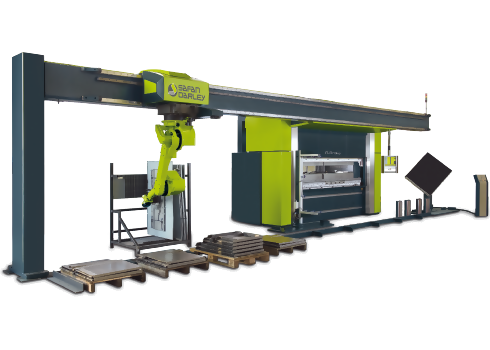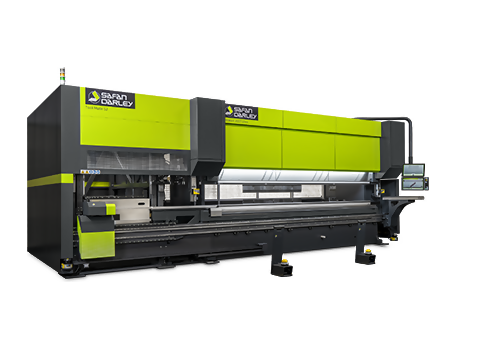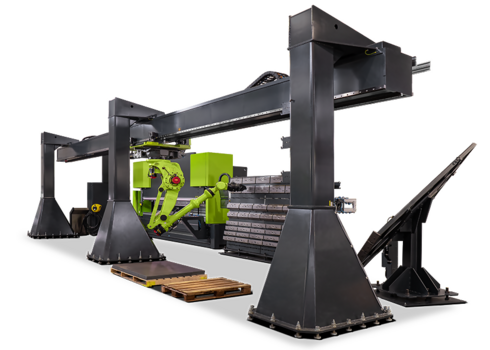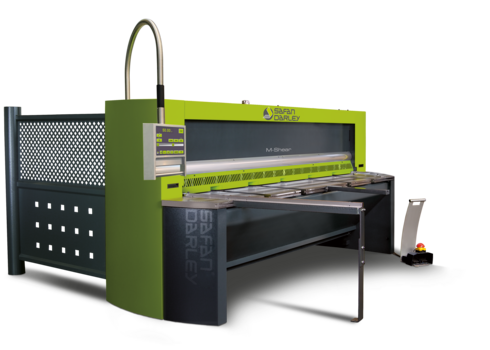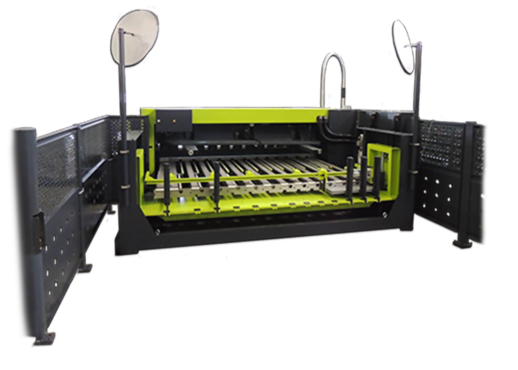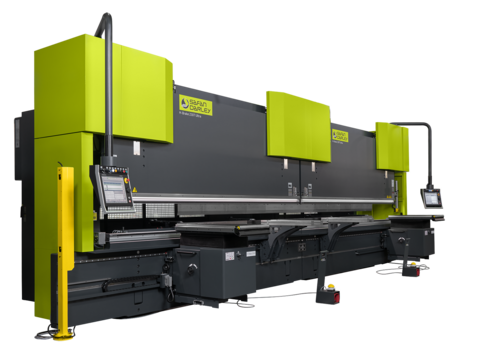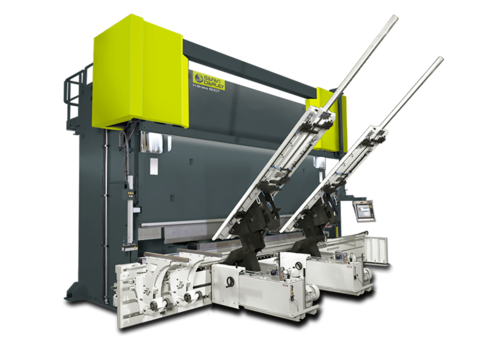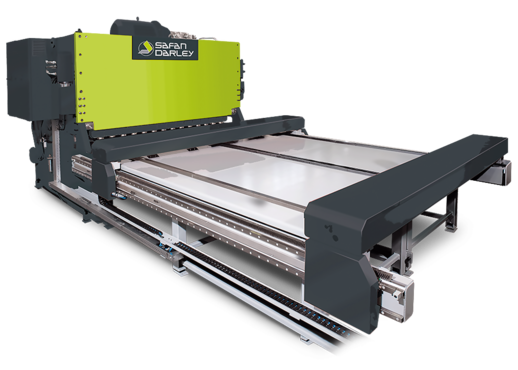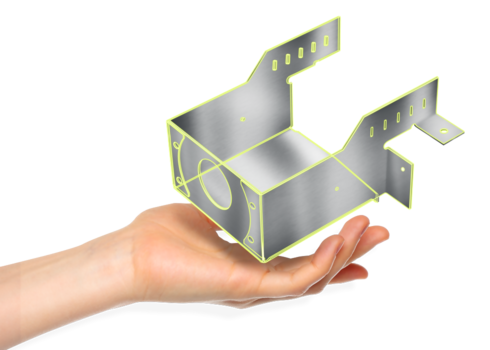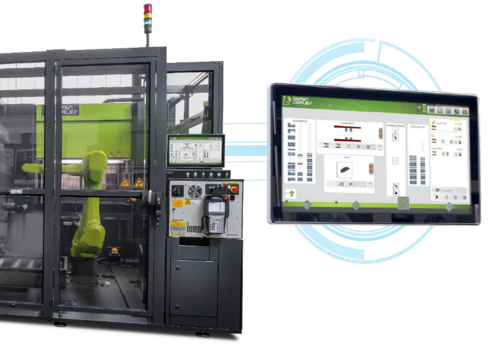
3 Ways to Maximize Production
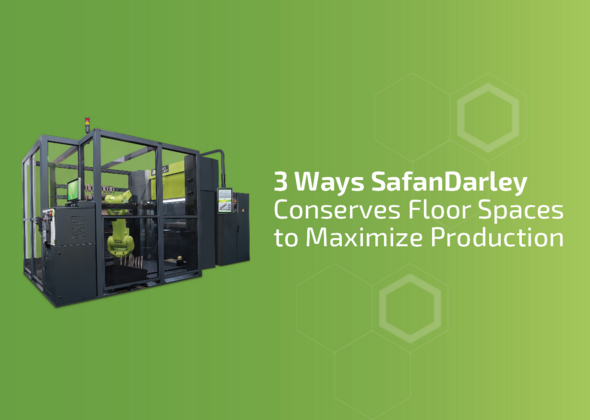
3 Ways SafanDarley Conserves FloorSpace to Maximize Production
The sky might be the limit for your sheet metal fabrication company's success, but the walls are a more immediate constraint. Your shop's production floor is where revenue is generated, and the size and allocation of that space directly impact how much can be produced on any given day.
The space issue comes to a head when companies buy, upgrade, or automate press brakes and shears, as these are typically the largest pieces of equipment in any shop.
I recently blogged about the three most crucial space-related factors to keep in mind when purchasing fabrication equipment, and in this blog I will build on that discussion to demonstrate how SafanDarley equipment excels with respect to all three of those factors: footprint, automation flexibility, and ergonomics.
Equipment Footprint and Space Requirements
Let's start with the most obvious and relevant factor: the footprint of the equipment. OEMs take a wide range of approaches in designing their press brakes, and space efficiency is not a priority for all of them. This is especially true for automated work cells. In lower-cost regions with massive facilities, for example, having equipment that takes up less space may not be a factor.
However, if you work in a typical small- to medium-sized fab shop, space determines how much you can produce and how cluttered your shop will feel — and that makes it a major factor.
Of the top OEMs, SafanDarley's equipment is by far the most compact. The E-Brake Mini Cell, for example, is equipped with a FANUC robot capable of handling up to 20 kg (approximately 44 lbs), a supply station for 4 product stacks, a delivery station, and a discharge chute — all within a footprint of 136 square feet. You can see the mini cell at work here.
SafanDarley's focus on space efficiency is partially due to the company's European roots. Manufacturing space is often expensive in Europe, so equipment space requirements have been a longstanding concern for SafanDarley customers.
It's also true that most companies, regardless of location, prefer to do more with less committed space. Why not produce more with the space you already have?
Automation Flexibility
One risk of automating press brakes is that with some OEMs, the new equipment is exclusively automated and cannot be operated manually. This is an important consideration that can complicate a few different circumstances:
- In the event that the automation software or automated components malfunction
- When a fabricator conducts an automation parts analysis and some of the parts are not good fits for automation
- If a fabricator produces something comprised of various parts, some of which are a good fit for automation, while others are not
In each of these situations, a fabricator runs the risk of having an expensive piece of equipment unnecessarily sidelined, wasting the valuable floor space beneath it.
To avoid this scenario, it’s wise to invest in machinery that can be both fully automated and operated manually in the event that any of the issues described above come to pass. This is exactly what the SafanDarley R-Brake solution provides.
SafanDarley's R-Brake is designed to be toggled between automated and manual modes. When situations arise in which automation isn't available or the best option, the operator can simply bypass the automated cell and work the machine with a foot pedal, the "old-fashioned way."
This is a low-tech lifesaver that can keep your equipment working and producing revenue until the problems are sorted out.
Manual mode is also a clutch feature that will come in handy when your company eventually needs to fabricate an item that cannot be fully automated (where some parts can be automated and some cannot). When this happens, SafanDarley customers can opt for a 24-hour work cycle where operators fabricate the manual parts during the day and the automated cell bends the other parts at night.
This approach maximizes productivity by running two shifts on the same floor space.
Ergonomics & Operator-Friendly Design
Ergonomics is probably the most overlooked aspect of space efficiency. The ergonomics designed into a press brake determine how efficiently and comfortably it can be operated — and ultimately how much product the people operating it will produce
The elevation of the machine's work surface is a major factor to consider if the option of using manual fabrication is important to your company. All of SafanDarley's automated press brakes have an operating height that is exactly the same as our manual equipment — so from the operator's perspective, nothing changes when the robot is out of the way.
The work surfaces for the automated cells produced by many of our competitors are elevated much higher, where it would be uncomfortable or potentially unsafe to operate the machine in a manual mode.
Beyond maintaining an operator-friendly work surface for all models, two of SafanDarley's E-Brakes (35T and 40T) have an ergonomic implementation option with a fully adjustable seating position and foot rest.
This design includes a working-height support table that surrounds the operator with useful work surfaces. Our customers find this setup to be beneficial for operators who fabricate large quantities of products over an extended period of time.
SafanDarley's light curtain system is another great example of the ergonomics and efficiency that are built into our entire line, as it enables our equipment to default to movement while keeping operators safe. As long as the light curtain is clear, the machine will bend metal. This is a tremendous advantage over traditional pedal-activated fabrication systems, as it saves operators hundreds of repetitive movements each day.
Fabricate More with Less Space Tied Up
Wouldn't it be great to get a chunk of your shop floor back? SafanDarley helps our customers reclaim production real estate every day and make their operations more efficient and productive.
Whether you're building a new facility and want to maximize ROI, looking to expand efficiently, or need to replace an existing piece of equipment and get some space back, SafanDarley offers the best value for your money.
Read more
blogs
Sheet metal fabricators are wise to focus on ROI because press brakes are critical investments that factor heavily into profitability. It is the overall production efficiency of each machine – not simply the ram speed – that determines how much metal it can bend. The bend speed optimization designed into SafanDarley’s press brakes provides a level of safety and production efficiency that is unmatched by our competitors, even those who quote faster ram speeds.
Technology and automation are changing sheet metal fabrication at a blistering pace. Innovations like Autopol software for offline press brake programming are changing the game, and it’s natural for them to get a lot of press. However, relationships still matter in our industry. In fact, I would say that partnering with the right OEM is as important now as ever.
